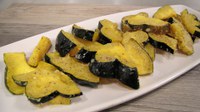Prairie Fare: Exploring Nutrition Along the Lewis and Clark Trail
(Click an image below to view a high-resolution image that can be downloaded)
By Julie Garden-Robinson, Food and Nutrition Specialist
NDSU Extension Service
“What did they do to stay busy when it was too cold to go outside?” I asked our tour guide as I looked around the small room that had housed several men.
“They played some games and visited with each other,” he said in answer to my question. As I looked around at some replicas of journals and tools, I imagined that some of the men probably were busy writing in journals and drawing maps.
We were standing inside one of the small rooms at the reconstruction of Fort Mandan near Washburn, N.D., which overlooks the Missouri River.
This was the approximate site where the Corps of Discovery, led by Captain Meriwether Lewis and 2nd Lt. William Clark, wintered from 1804 to 1805. Along with the crew of men, an American Indian woman (Sakakawea, which has various spellings and pronunciations) and her baby son were part of the journey.
Having had three children attend Lewis and Clark Elementary School, I always am interested in exploring historical sites named after these explorers. Lewis and Clark and their crew were assigned to explore the area of the Louisiana Purchase, the Missouri River and other waterways to the Columbia River near Astoria, Ore. Ultimately, they were trying to get to the Pacific Ocean. A reconstruction of Fort Clatsop, which is similar to Fort Mandan, is in Oregon.
The explorers were commissioned by Thomas Jefferson, who wanted them to map a large area and record detailed information about the Native people, animals and plants in the areas they encountered on their voyage to find a waterway across the continent for trade.
As I looked around the fort, I doubted my survival that winter, even with the fireplace as the centerpiece of the room. The place looked a little drafty to me.
Yes, North Dakota is cold in the winter, and our guide mentioned that the temperatures dipped below minus 30 F, perhaps to minus 40 F, that winter.
I probably would have asked for extra animal hide covers. Maybe Seaman, the huge black Newfoundland dog who accompanied the Corps, could have been in my room. He would have generated some heat, too.
Staying warm and sustaining themselves through hunting wild game required a lot of energy for the explorers.
I also was interested in learning what sustained them nutritionally during their often arduous journey. Our guide took us to the room where the food was stored. Food we saw included corn, squash, dry beans and replicas of the provisions they brought with them.
I had noted the “three sisters” garden on the way to the fort. Along with lean protein from the game meat and fish, the food from the gardens helped nourish the explorers and their crew during their long winter.
The tradition of the plantings has been passed from generation to generation in the Native culture. The three sisters are corn, beans and squash, which are grown together on mounds of soil. The corn provides the pole for the bean vines to climb. Beans also nourish the soil by adding nitrogen back into the soil.
The squash provides shade for the ground to prevent moisture from evaporating. Squash vines also deter some pests from reaching the corn and beans.
Together, the sisters provide a balanced combination of nutrition. Beans and corn are “complementary proteins,” which means each provides the amino acid (protein building block) the others lack. Beans are rich in protein, corn is rich in carbohydrate, and squash provides fiber and a variety of vitamins, especially carotenoids that our body converts to vitamin A.
Even if we are not on an exciting voyage of discovery, we can be explorers of nutrition. Enjoy some corn, beans and squash, and the rest of autumn’s food bounty.
Try preserving some food. American Indian tribes often dried corn and other vegetables to save for winter months. See https://www.ag.ndsu.edu/food for information about preserving a wide range of vegetables and fruits with a variety of methods. Click on “Bean Resources” for a cookbook about dry edible beans, and click on the “Recipes” link to search for recipes you have not tried.
Here’s a tasty way to enjoy some nutritious squash roasted with a bit of oil and some added seasonings. Try this technique with root vegetables such as carrots and rutabagas, and tubers such as potatoes.
Parmesan Roasted Acorn Squash
1 (2-pound) acorn squash
1/4 c. grated Parmesan cheese
6 sprigs fresh thyme (or 3/4 tsp. ground dried thyme)
2 Tbsp. olive oil (or other oil)
1/2 tsp. salt, or to taste
1/4 tsp. ground black pepper, or to taste
Preheat oven to 400 F. Wash squash, then halve lengthwise, seed and cut into 3/4-inch slices. Mix Parmesan cheese, thyme, oil, salt and pepper together in a bowl. Add squash and toss until the squash is coated evenly. Spread into a jelly roll pan or other pan with sides. Roast until golden brown and tender, 25 to 30 minutes.
Makes eight servings. Each serving has 90 calories, 4.5 grams (g) fat, 2 g protein, 12 g carbohydrate, 2 g fiber and 170 milligrams sodium.
(Julie Garden-Robinson, Ph.D., R.D., L.R.D., is a North Dakota State University Extension Service food and nutrition specialist and professor in the Department of Health, Nutrition and Exercise Sciences.)
NDSU Agriculture Communication - Aug. 25, 2016
| Source: | Julie Garden-Robinson, 701-231-7187, julie.garden-robinson@ndsu.edu |
|---|---|
| Editor: | Ellen Crawford, 701-231-5391, ellen.crawford@ndsu.edu |



